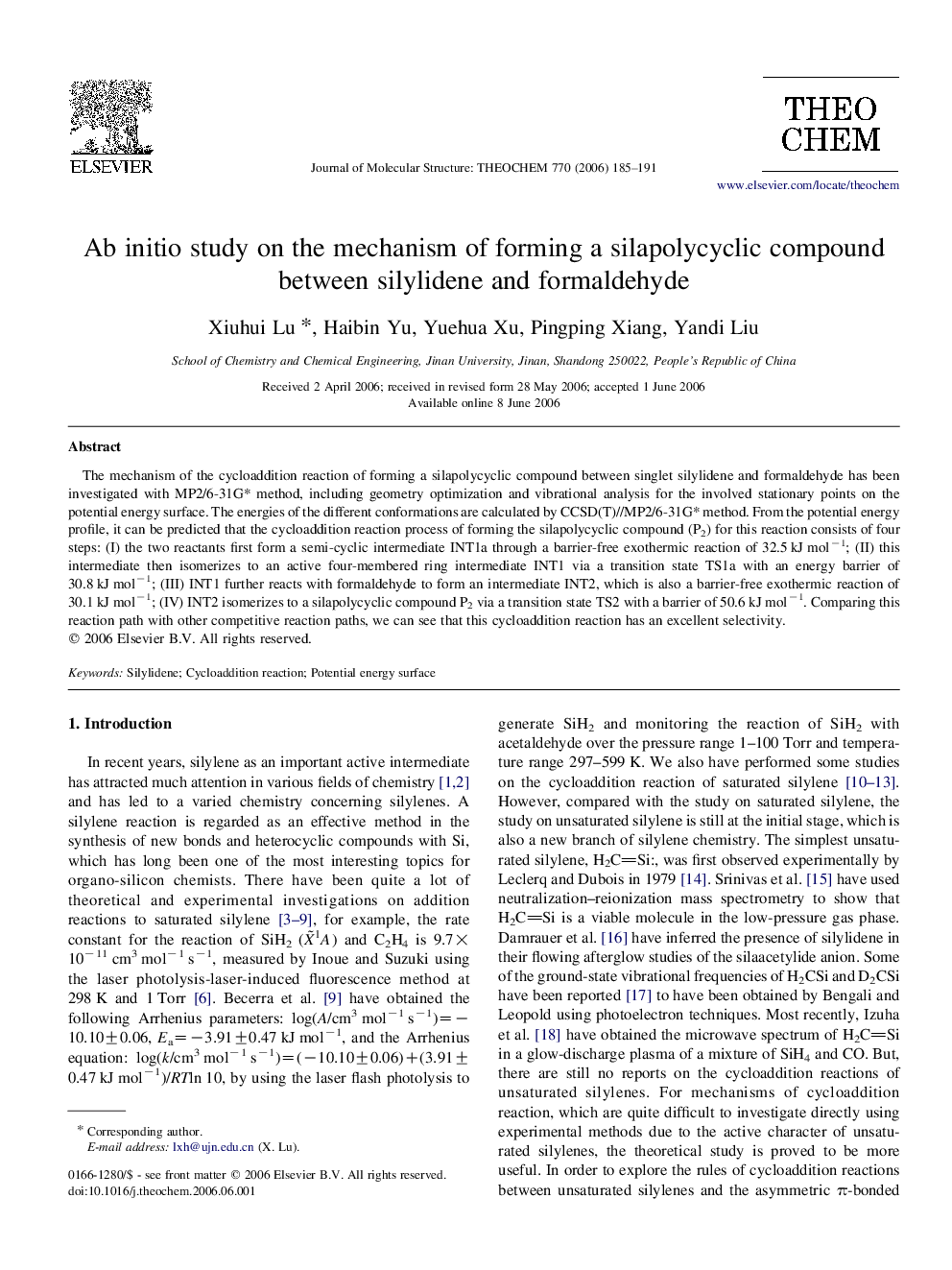| Article ID | Journal | Published Year | Pages | File Type |
|---|---|---|---|---|
| 5418317 | Journal of Molecular Structure: THEOCHEM | 2006 | 7 Pages |
Abstract
The mechanism of the cycloaddition reaction of forming a silapolycyclic compound between singlet silylidene and formaldehyde has been investigated with MP2/6-31G* method, including geometry optimization and vibrational analysis for the involved stationary points on the potential energy surface. The energies of the different conformations are calculated by CCSD(T)//MP2/6-31G* method. From the potential energy profile, it can be predicted that the cycloaddition reaction process of forming the silapolycyclic compound (P2) for this reaction consists of four steps: (I) the two reactants first form a semi-cyclic intermediate INT1a through a barrier-free exothermic reaction of 32.5Â kJÂ molâ1; (II) this intermediate then isomerizes to an active four-membered ring intermediate INT1 via a transition state TS1a with an energy barrier of 30.8Â kJÂ molâ1; (III) INT1 further reacts with formaldehyde to form an intermediate INT2, which is also a barrier-free exothermic reaction of 30.1Â kJÂ molâ1; (IV) INT2 isomerizes to a silapolycyclic compound P2 via a transition state TS2 with a barrier of 50.6Â kJÂ molâ1. Comparing this reaction path with other competitive reaction paths, we can see that this cycloaddition reaction has an excellent selectivity.
Related Topics
Physical Sciences and Engineering
Chemistry
Physical and Theoretical Chemistry
Authors
Xiuhui Lu, Haibin Yu, Yuehua Xu, Pingping Xiang, Yandi Liu,
